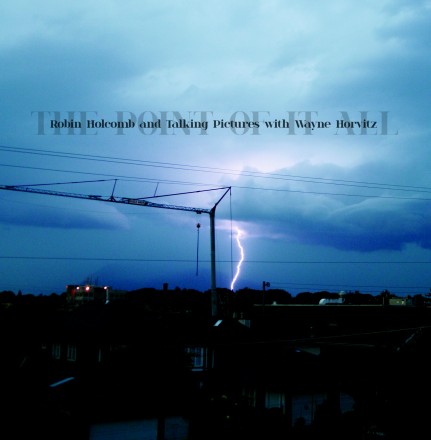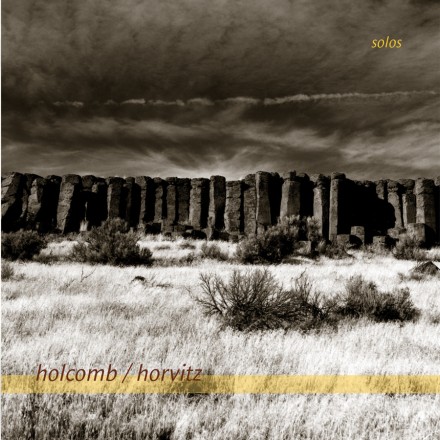Robin Holcomb and Talking Pictures with Wayne Horvitz
The Point of It All
SGL 1584-2Robin Holcomb’s last release on Songlines was Solos (2004) on which she and her husband Wayne Horvitz shared a program of their solo piano compositions and improvisations. Meanwhile Vancouver guitarist Ron Samworth’s quartet Talking Pictures (which released Humming on Songlines in 2000) had been performing some of Robin’s music and had concertized with Wayne (documented on the CD Intersection Poems); in 2006 Ron invited Robin and Wayne to collaborate with them in creating a collectively arranged concert of Robin’s work in Vancouver. Peggy Lee was already part of Wayne’s Gravitas Quartet, and after the concert everyone felt that this new initiative shouldn’t just be a one-off. Peggy and Robin started performing occasionally as a duo, and in 2009 a second Vancouver concert and a recording session were organized. Ron and Peggy each composed a new song for the occasion to complement 9 pieces of Robin’s (only one of which had been recorded before) and her arrangement of “After the Gold Rush.”
The results throw a different light on the music of one of America’s most distinctive yet ultimately elusive musicians and lyricists. As Robin puts it, “Talking Pictures share an intimacy and intuition that is staggering and which they apply with joyful abandon in not only our mutual improvisations but also in their interpretation of my compositions. It was a wonderful experience for me, one of those rare situations wherein I can not only improvise and do whatever arises in the moment, but can also bring to the table any music I want to – the end result doesn’t have to be only an improvised project, or a chamber music project, or a songs project or a jazz project. There is great logic in their coloration and sense of balance, no matter how seemingly chaotic or contrary… Wayne and I have been playing each other’s music for more than thirty years. Talking Pictures have played together for over fifteen years. There are a lot of historical strands at work.”
Ron adds, “Robin’s music is the perfect vehicle for a band like Talking Pictures. There is such a wealth of information in any given phrase – melodic, harmonic and rhythmic, not to mention the extraordinary richness of lyrical imagery in her songs. It’s an improviser’s dream. Our band greatly values ensemble playing where we create unified improvised pieces that explore a variety of textures and moods. Robin and Wayne seem to share that open, collective spirit.”
In a post-modern world of sometimes gaudy mix-and-match stylistics, yet another record that confounds easy categorization may not seem unusual. But The Point of It All is unusual. For one thing it takes its time to get where it’s going, and this slow build has a cumulative effect. And, as the title suggests, there’s a lesson of sorts being expounded. There’s certainly something archaic about it, almost as if these songs had already existed as prototypes in another time and place, a lost America of long ago (of course one of them, “Johnny Has Gone for a Soldier,” actually dates from the American War of Independence). You can hear this in Robin’s voice, which seems to lament even as it celebrates, and you can hear it in the sometimes circus-like and gospel-like tones and timbres of the instruments. Yet this music is very much about now, a symbolic distillation of the present. It does not mince words, and its catharsis is hard-earned, not nostalgic. It is also, at times, joyful and exuberant, even raucous. It seems to light up from the inside.
Thanks to Tom Lee Music for providing a Steinway D for the sessions.
“Robin Holcomb has never been one to toe the lines of genre or, for that matter, expectation. Her art is singular: Who else creates music and lyrics that resonate deeply with the nation’s pre-industrial past, incorporate slanted jazz, and vividly evoke her own present moment? Holcomb does that so well that all the traditions and historical allusions of her music seamlessly meld: A lilting waltz may suddenly electronically distort into a winter of longing on a frontier plain, circa 1868. Or, an allusion in her lyrics to hardscrabble farm life may complement musical hints of unyielding church pews and bedraggled military musters far off during the Revolutionary War. On The Point of It All, Holcomb, a fine vocalist and even finer pianist, creates an almost fully convincing personal hybrid. To do so, she called a summit of outstanding musicians based in the Pacific Northwest and British Columbia, all of them able to range as far and wide as Holcomb asks – and to bring it all home…Each band member makes memorable contributions – memorable, above all, for their measured contribution to the whole.” – Peter Monaghan, Earshot Jazz

